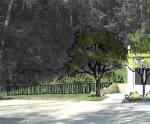Grey Dogwood Tree Information
Images of Grey Dogwood:






Grey Dogwood grows in the following 32 states and provinces:
Arkansas, Connecticut, Delaware, Illinois, Indiana, Iowa, Kentucky, Maine, Manitoba, Maryland, Massachusetts, Michigan, Minnesota, Missouri, Nebraska, New Hampshire, New Jersey, New York, North Carolina, North Dakota, Ohio, Oklahoma, Ontario, Pennsylvania, Rhode Island, South Carolina, South Dakota, Tennessee, Vermont, Virginia, West Virginia, WisconsinInformation about Grey Dogwood:
The Cornus Racemosa is commonly known as the Gray Dogwood, Gray-stemmed Dogwood, Grey Dogwood as well as Panicled Dogwood.
The currently accepted scientific name of gray dogwood is Cornus racemosa Lam. . Some authorities consider C. racemosa a subspecies of Cornus foemina . Little , however, considers it a distinct species.Gray dogwood's main range is from Maine and southern Ontario; south through New England and Pennyslvania; and west to Ohio, Indiana, Michigan, Illinois, Missouri, Iowa, and Minnesota. Its southern range is from the Appalachian Mountains of Virginia to northern Arkansas. Disjunct populations also occur in North Carolina, Tennessee, Kentucky, North and South Dakota, and Nebraska .Gray dogwood is one of the dominant shrubs in the oak-hickory (Quercus-Carya) forests of the northeastern United States. Common codominants include maple-leaved viburnum (Viburnum acerifolium) and Virginia creeper (Parthenocissus quinquefolia). Other common associates of gray dogwood include American hazel (Corylus americana), beaked hazelnut (C. cornuta), chokecherry (Prunus virginiana), smooth sumac (Rhus glabra), and red raspberry (Rubus idaeus) .Some of the information provided here is attributed to:Coladonato, Milo. 1993. Cornus racemosa. In: Fire Effects Information System, [Online]. U.S. Department of Agriculture, Forest Service, Rocky Mountain Research Station, Fire Sciences Laboratory (Producer). , available at the USDA Fire Effects Information System (FEIS) website